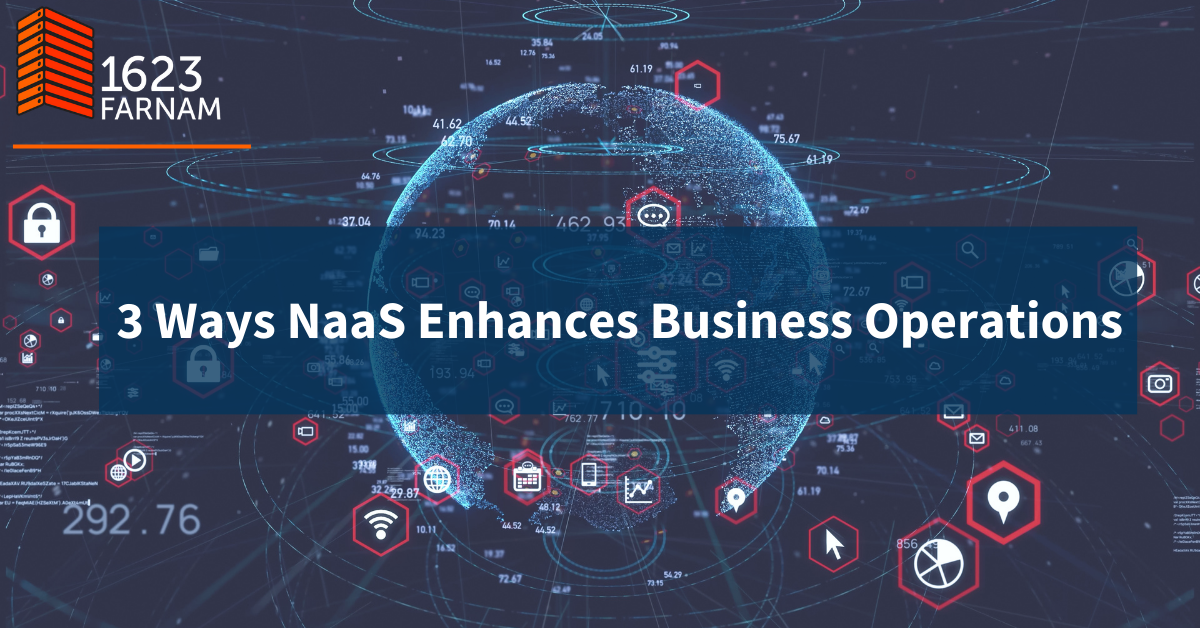Staples debuted its iconic Easy Button in 2005 as part of an ad campaign, but the fictitious product generated so much buzz that the office supplies retailer began selling them. People, it seemed, liked the idea of having an object to solve problems simply in the workplace (or even just to make you feel like the solutions came easily), absurdity notwithstanding.
The unfortunate truth is the Easy Button is a gimmick, albeit a wildly successful one. Doing business is complicated, and silver bullets are about as real as the werewolves they could purportedly kill. While you can’t make problems go away with the push of a button, there are solutions that can help streamline and optimize operations without too much headache — even in a world of rapidly-evolving digital, mobility-centric business. Adopting a Network-as-a-Service (NaaS) solution can streamline many processes and eliminate headaches that come with maintaining network infrastructure.
Here are three ways NaaS enhances business operations:
1. Scalability On Demand
Seasonal changes. Economic forces. Weather events. Viral videos. At most companies, business ebbs and flows due to factors that are often beyond their control. Some companies build their business plans around known factors, such as Black Friday, but there’s no accounting for the unknowns by definition.
With NaaS solutions, though, it doesn’t matter whether changes were anticipated or came out of nowhere. A Halloween-themed retailer can start to ramp up bandwidth provisions beginning in September. Insurance providers can suddenly meet a spike in service requirements when a natural disaster strikes. A NaaS provider has all the groundwork laid so that connections to data centers, clouds, IoT and other business partners can be beefed up all without making timely, costly changes to hardware that’s inevitably headed toward antiquity. The provider takes on those investments to offer them at scale, freeing up businesses so they can focus on their other needs.
Of course, the extremes are not indicative of day-to-day operations, but needs are sure to fluctuate. Gradual growth and planned increases in activity based on short-term projects are more typical. Backed by public and private cloud ecosystems, NaaS allows businesses to scale up and down as operations warrant, and pay for what they need as they need it.
2. External Infrastructure
The beauty of NaaS is right in the name – as a service. There’s no need to invest in hardware, which also means there’s no need to maintain hardware. The network needs are met at an upfront, agreed upon price. IT professionals can focus on other needs, all while resting assured the backbone is well taken care of. NaaS providers work 24/7, seven days a week ensuring connectivity is always available. Customers don’t need to have someone on their staff on call in case of a network emergency.
Hardware and software costs are baked into the contract with a NaaS, which means the latest and greatest technology is always available but companies don’t pay for the upgrades. This is one of the benefits of shifting the network from a capex to an opex model. Another plus is the equipment that companies rely on is stored off-premises, which can free up valuable space and resources while offering more options in terms of facility use and management.
3. Global Connections
NaaS providers bring global interconnectivity directly to their customers. This means secure, reliable and lightning-fast access to IoT partners, cloud networks, data centers, SaaS providers, and more. The ability to move data between global destinations is an asset not only to NaaS customers, but their customers as well.
Another advantage of having a global reach is that customers can connect to their network no matter where they are. Network access between locations, regardless of how far apart they are, increases efficiency and streamlines processes. It also benefits interactions with key partners and stakeholders who may be on different continents.
Around the World At 1623
The benefits of NaaS will depend on individual businesses’ specific needs. A good NaaS provider will help identify how it can meet those needs and tailor the right solution. That’s why, at 1623 Farnam, we sought partnerships with leading NaaS providers PacketFabric, MegaPort, and Console Connect. These providers have sterling reputations for managing the mission-critical networks used by companies worldwide, and they deliver the advantages that every digital business is looking for as they digitally transform — what could be better than that?
Contact 1623 Farnam to learn how to apply these NaaS benefits to your business.


